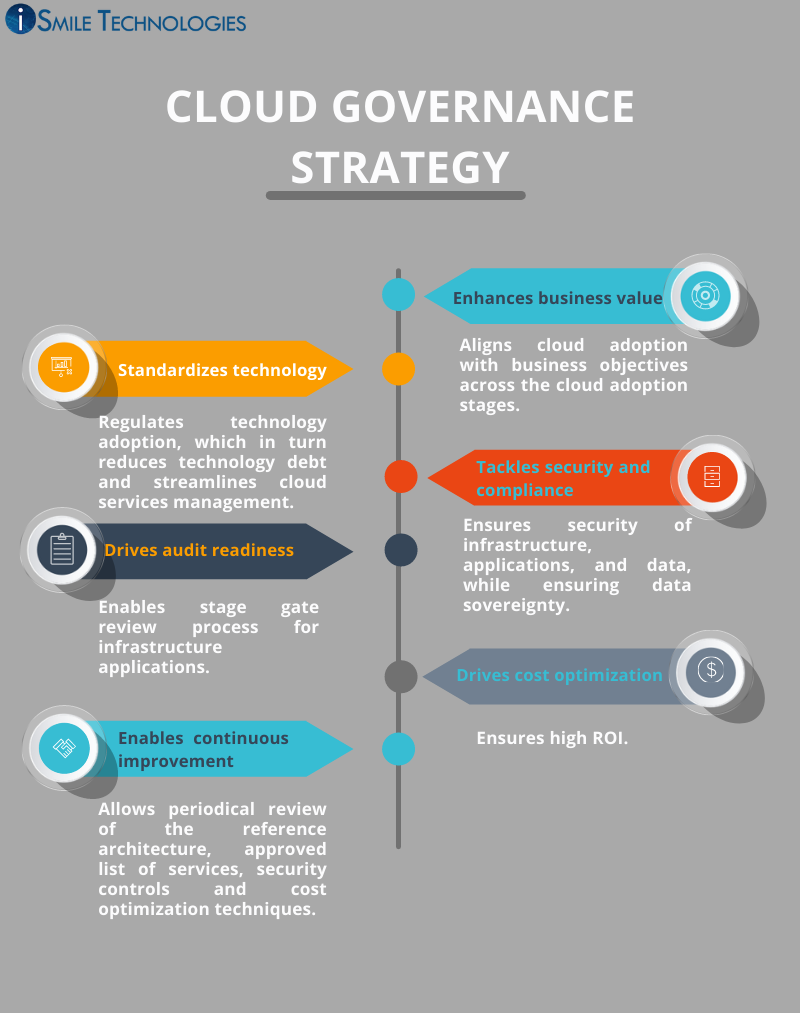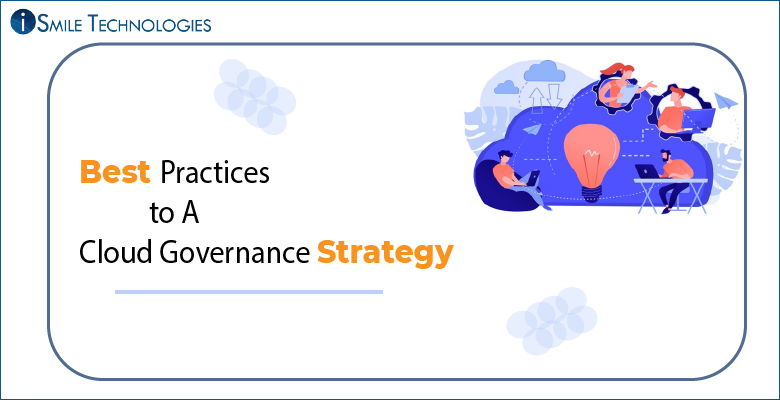Changing technology platforms or business processes produce risk factors for an organization. Cloud governance helps in reducing these risks and ensures minimal hindrance to your innovation or adoption efforts.
Cloud governance is a set of rules meant to deal with costs and efficiencies in a cloud. Fundamentally, cloud governance best practices are about:
- Creating a set of rules under which the enterprise operates in the cloud.
- Monitoring activities on the cloud to guarantee flexibility
Where are these practices necessary?
It becomes hectic to control how far users deviate from the enterprise’s strategic direction in the evolving cloud environment. The self-provisioning of the cloud is limitless. Cloud governance practices help enterprises to control cost, performance, and security. Cloud governance practices help maximize visibility and maintain control.
These practices aren’t limited to the optimization of performance and costs. They help in establishing safeguards for any cloud-related events. The uncontrolled use of safeguards can introduce weakness, cause inefficiency, and increase the lifetime of cybersecurity threats.

Some of the best practices for Cloud Governance
The definition of best practices varies depending upon the objectives and growth stage of the enterprise. A business should list its cloud resources to determine what works best. Moreover, some common governance disciplines help develop policies. These disciplines include:
- Cost management: Cost is the biggest concern for an enterprise when moving to a cloud. Balancing between cloud costs, performance demands and adoption pacing it a big challenge. It is important to develop cost control policies across all cloud deployments.
- Security: Security is the core part of an IT, and more so the cloud, given its special security concerns. The IT team finds the security requirements of an organization.
- Identity: Consistency is the key factor while applying identity requirements to decrease the risk of breach. It is critical to identify the best practices for cloud governance.
- Resource consistency: Cloud operations need consistency in resource configuration. Governance tooling is a process used to consistently configure the resources in the cloud.
- Deployment acceleration: There are three key factors for improving governance, Standardization, centralization, and consistency.
Conclusion
It becomes easy to develop governance policies when business resources are visible. In the cloud, it becomes harder to enforce governance policies. Dues to this reason, many businesses rely on cloud management platforms. These tools help them to provide the capacity to monitor and enforce cloud governance practices.
In case you want to skydive in this environment of cloud governance strategy. Feel free to visit our website: https://ismiletechnologies.com/request-a-consultation/.








